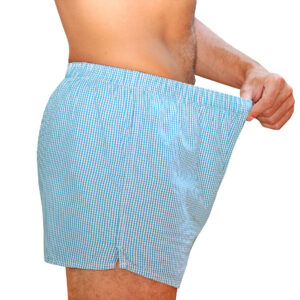Pubic lice
Pubic lice (crabs) are annoying, but harmless. You can get pubic lice through sexual contact, but they’re also spread through clothing and sleeping bags or if you lie very close to each other.
What are pubic lice?
A pubic louse (or ‘crab’) is 1.5 to 2.5 mm long, grey or light brown, and has 6 legs. Pubic lice attach themselves to the base of hairs, where they lay their eggs (nits). Nits are visible as small white dots on the hair.
Symptoms
Pubic lice cause itching in your pubic hair. This starts about 2 weeks after you’ve had sexual contact with someone who has pubic lice. The itching is caused by the lice. The lice are commonly found in the hair around your genitals and your anus. They can also live in armpit hair, chest hair or in the hair on your thighs or around your navel. Pubic lice can even live in your eyelashes and eyebrows.

Scratching does not help
The lice live on human blood. They leave red or brown droppings which you may see as red or brown spots in your underwear. You may get red and irritated skin. Scratching doesn’t help, and it may make it worse by causing an infection.
Treatment
Discuss the treatment of scabies with your doctor. Loxazol lotion or cream or Prioderm lotion are used to treat lice. Repeat the treatment after a week. After the second treatment, you can be sure that all eggs and lice are dead. Washing with soap and water or shampoo will not get rid of pubic lice.
Cleaning
Wash the clothes you were wearing before the treatment at a minimum of 60°C. Also wash your bedding, to kill the eggs. Air your mattress and pillow. Put anything you can’t wash in a sealed plastic bag for at least two to three days (48-72 hours).
To ensure that the lice won’t return, it’s important that anyone you had sex with is also treated. Even if they have no symptoms.
Tip
If you’ve caught pubic lice during unsafe sex, you may have another STI too. Arrange a test by calling Saba Cares on +599.416.3288 or the Public Health department on +599.416.5566.
